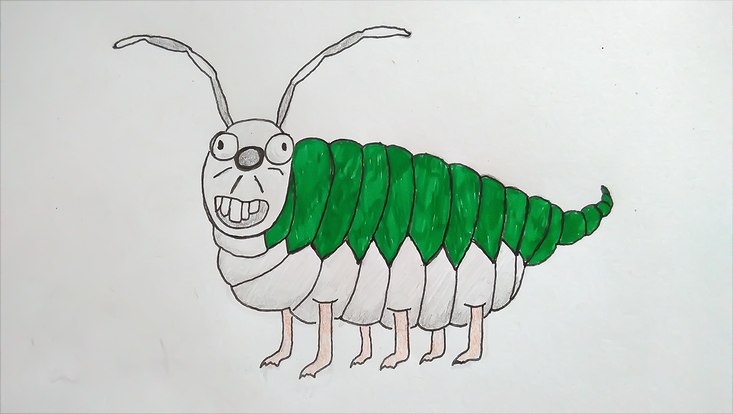
Small rodent with big appetiteThe stone louse is our treasure of the month April
1 April 2019

Photo: UHH/CeNak, Möckel
The most distinctive feature of the stone louse is its pronounced dentition, with which it can crush large quantities of stone and concrete.
The stone louse was first made public by a German zoologist in 1976. The stone-eating rodent was then described years later in the medical dictionary Pschyrembel. LIB scientists have now been able to observe living specimens of the common stone louse (Petrophaga lorioti). The louse with the unusual diet is our treasure of the month April.
The population at LIB
The presence of the small rodent was noticed by losses in rock samples of the geological collection, as well as gnawed objects in the museum of nature - geology. In mineralogy, too, a certain loss of ores and minerals, but especially of meteorites and extraterrestrial rocks from the Moon and Mars, could be noticed. LIB employees used photo traps set up in the collections to track down the animals with the stone preference. Scientists have since identified some specimens as common stone lice under high-resolution microscopes.
Behavior and diet
At 0.3 to 3 millimeters, the stone louse is the smallest native rodent. There are no reliable data on their worldwide occurrence, as their populations are repeatedly subject to strong fluctuations. Their typical habitats are mountains, deserts and large cities. The species needs sufficient occurrences of its preferred food, namely any kind of rock or concrete: an adult stone louse eats up to 28 kilograms of it daily. Species that specialize in kidney, bladder, gall or dental calculus could be used for therapeutic purposes in the future.
Stone louse research as a new focus
In general, the Lapivora family is species-rich and has produced a wide variety of stone louse species. Therefore, it could become an important research focus in biodiversity and evolution research at LIB in the future. The effects of climate change or human civilization on the distribution and evolution of the small rodent are still almost unexplained. It is known, however, that the Berlin Wall was an important food source, as evidenced by the abrupt decline in the stone louse population after the fall of the Wall. This connection suggests that certain species of stone louse may benefit from the human way of life.
"Evolutioneum" as a stone louse biotope?
The fact that LIB's stone louse populations feel so at home, especially in the collections with extraterrestrial celestial bodies, could also be related to the fact that this food source is virtually in the rodents' genes. Researchers suspect that stone lice once arrived on Earth through a meteorite impact. The buildings that house CeNak's collections may also have attracted the stone louse, as they contain masses of the best concrete and other materials attractive to the stone louse. The planned new natural history museum for Hamburg, the "Evolutioneum," will replace the ensemble of buildings in the future. Activists now hope that the stone louse will still feel at home there and not migrate to the Elbphilharmonie.
